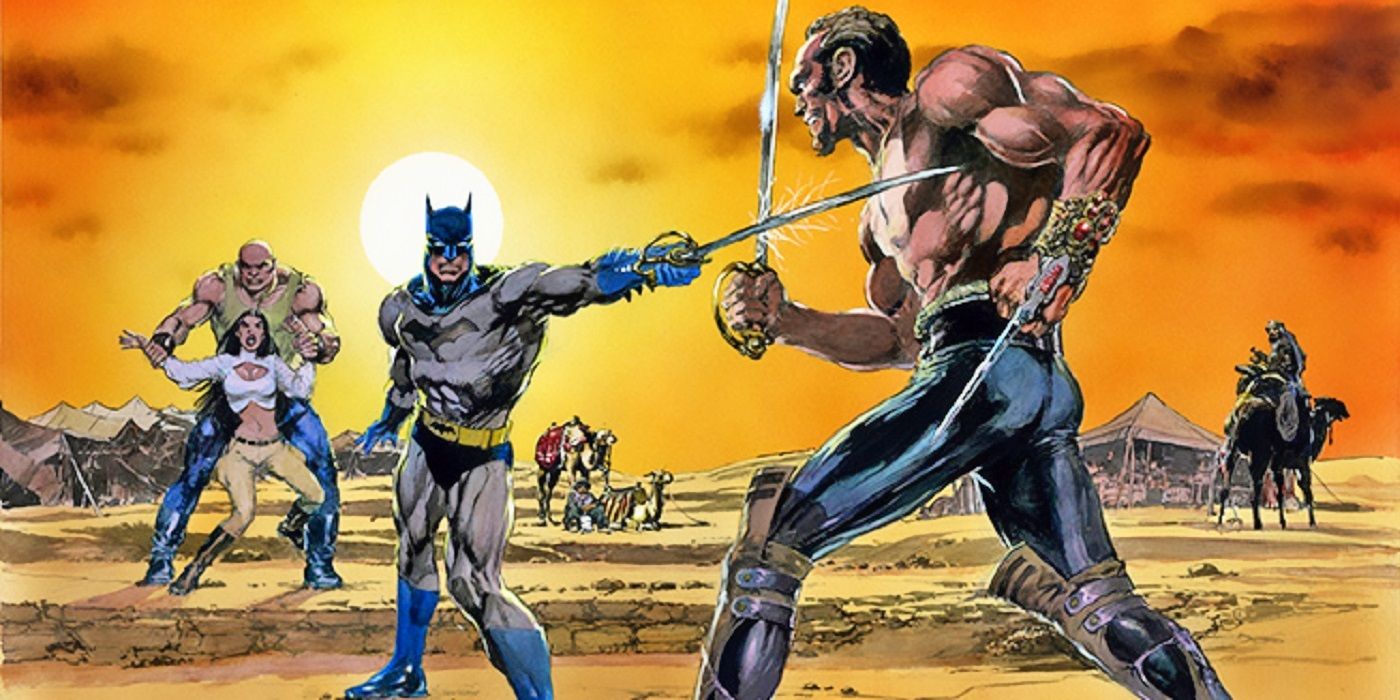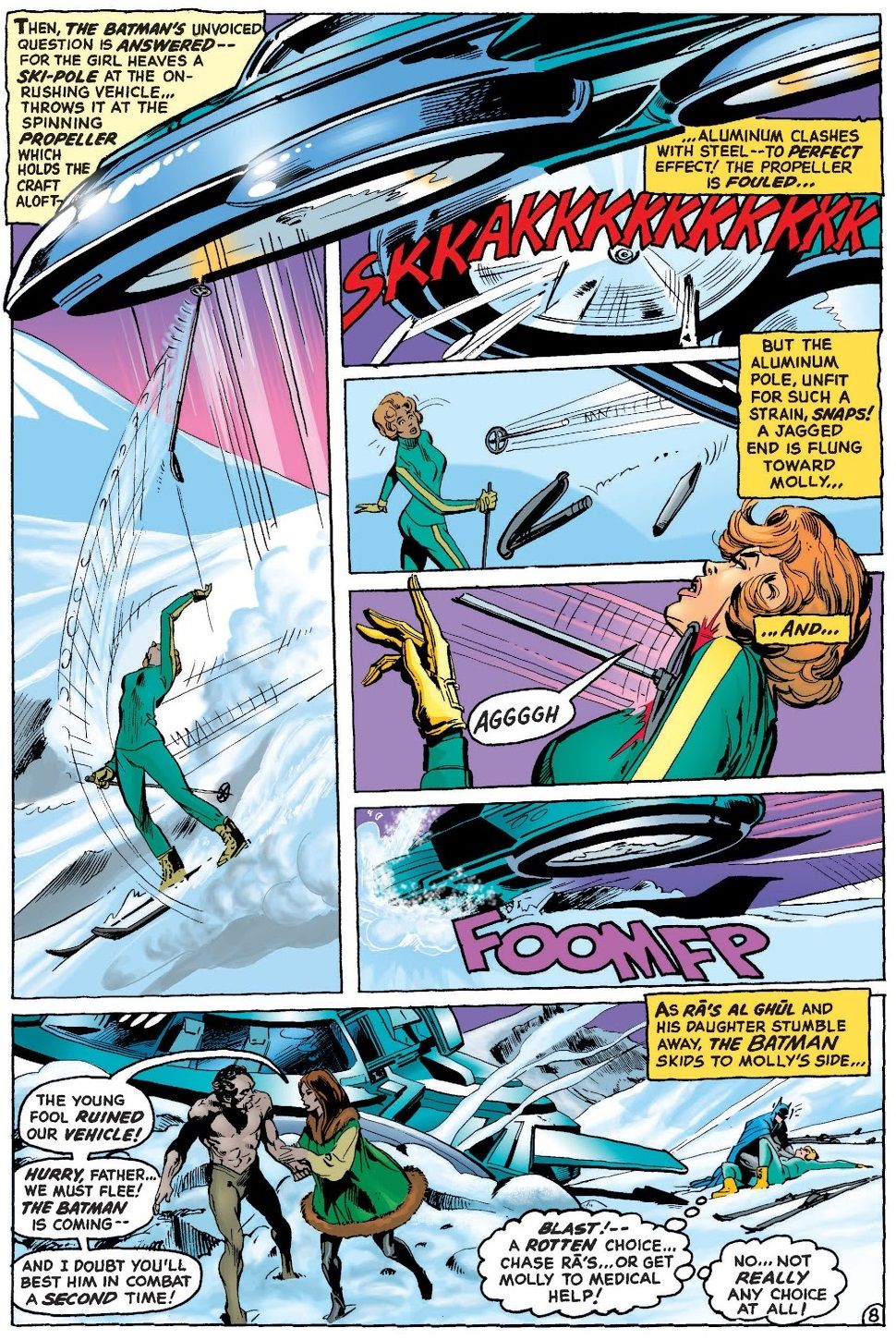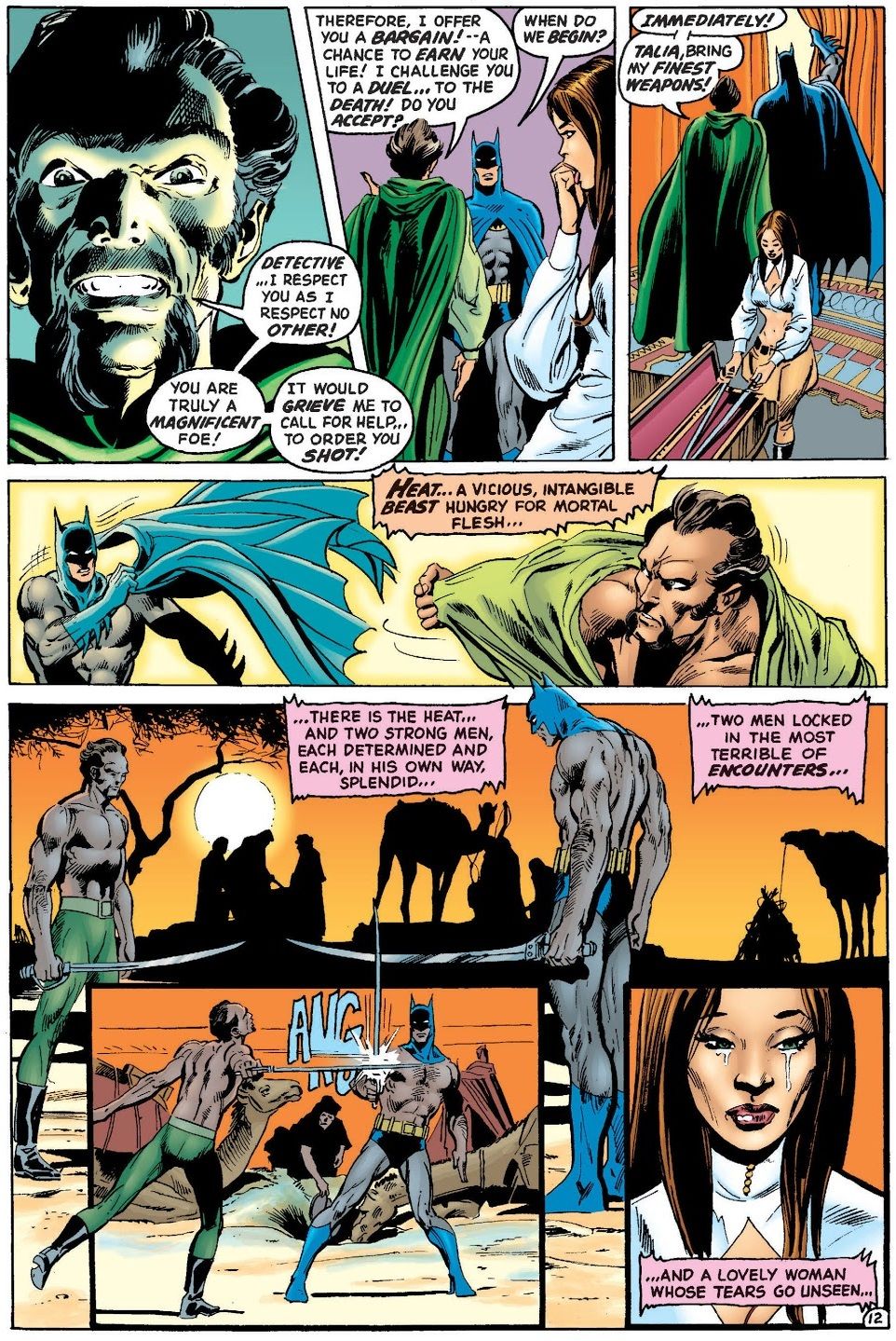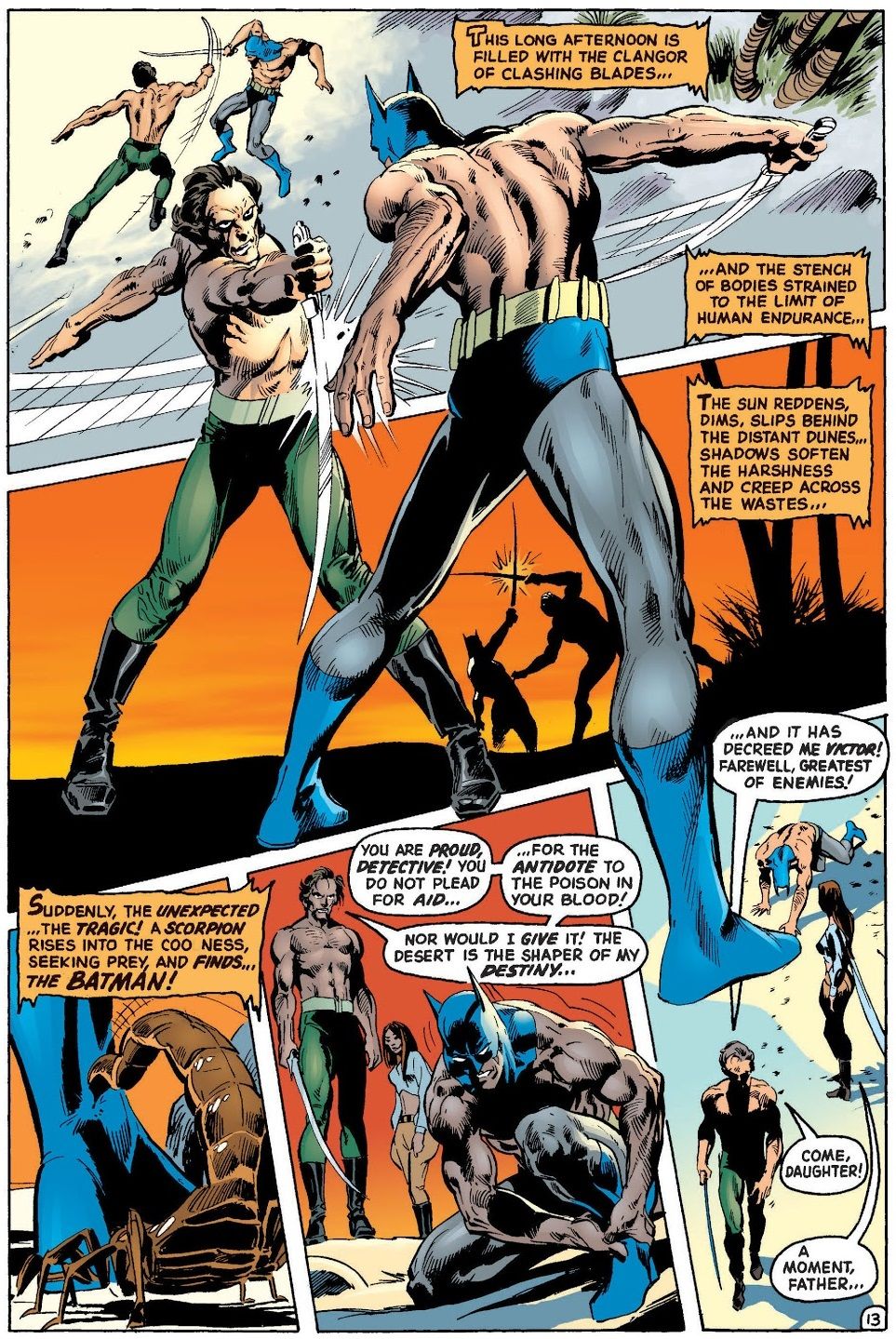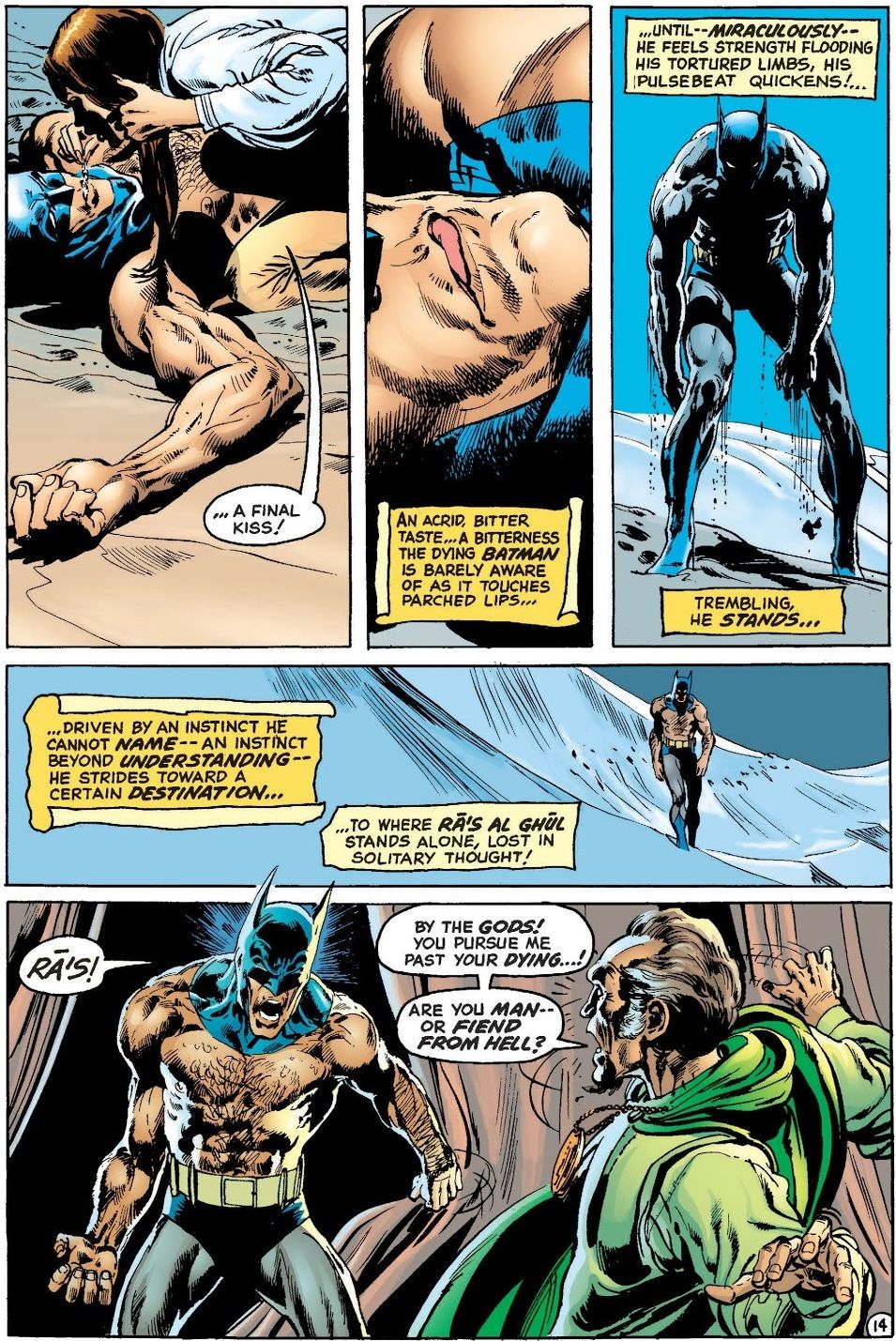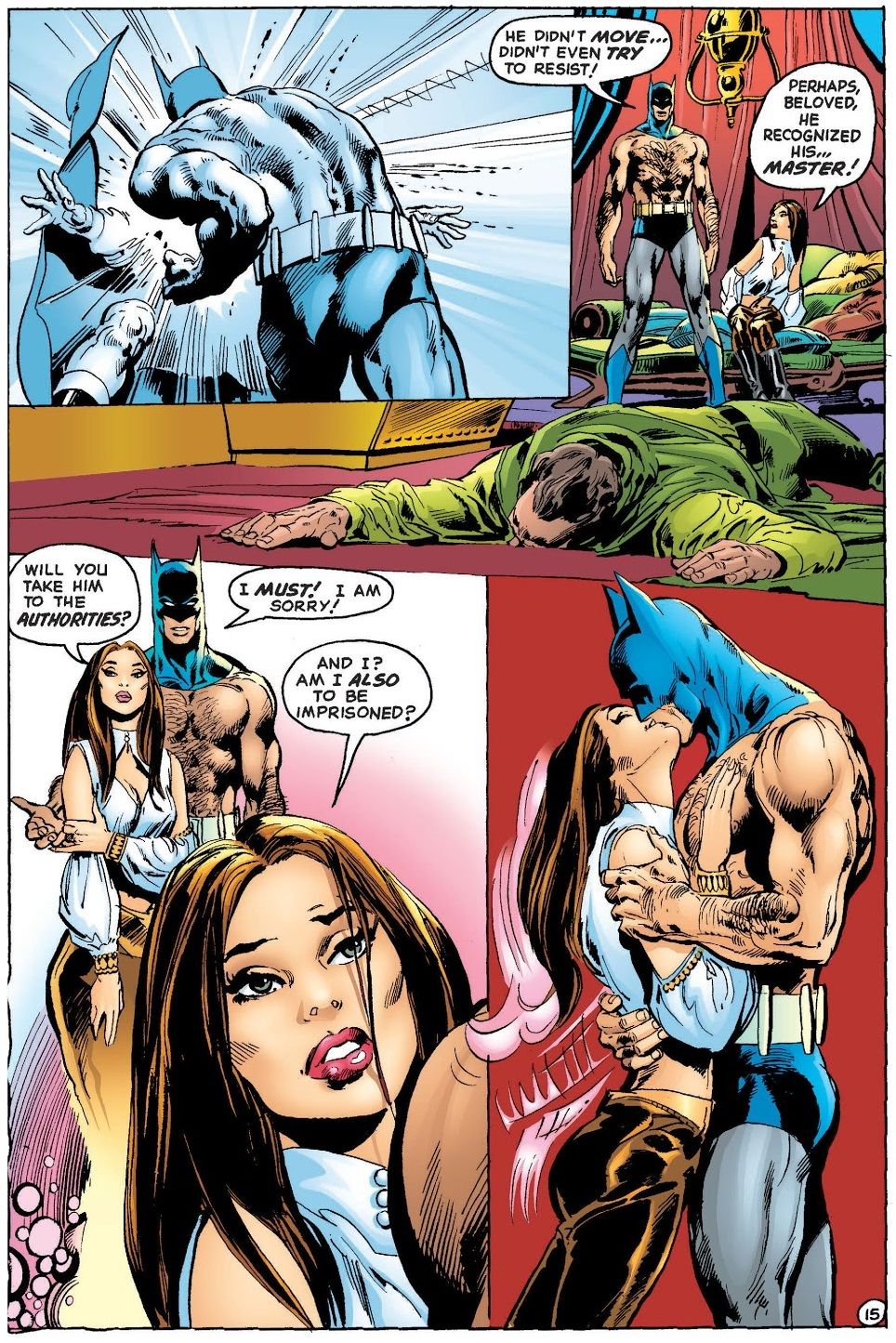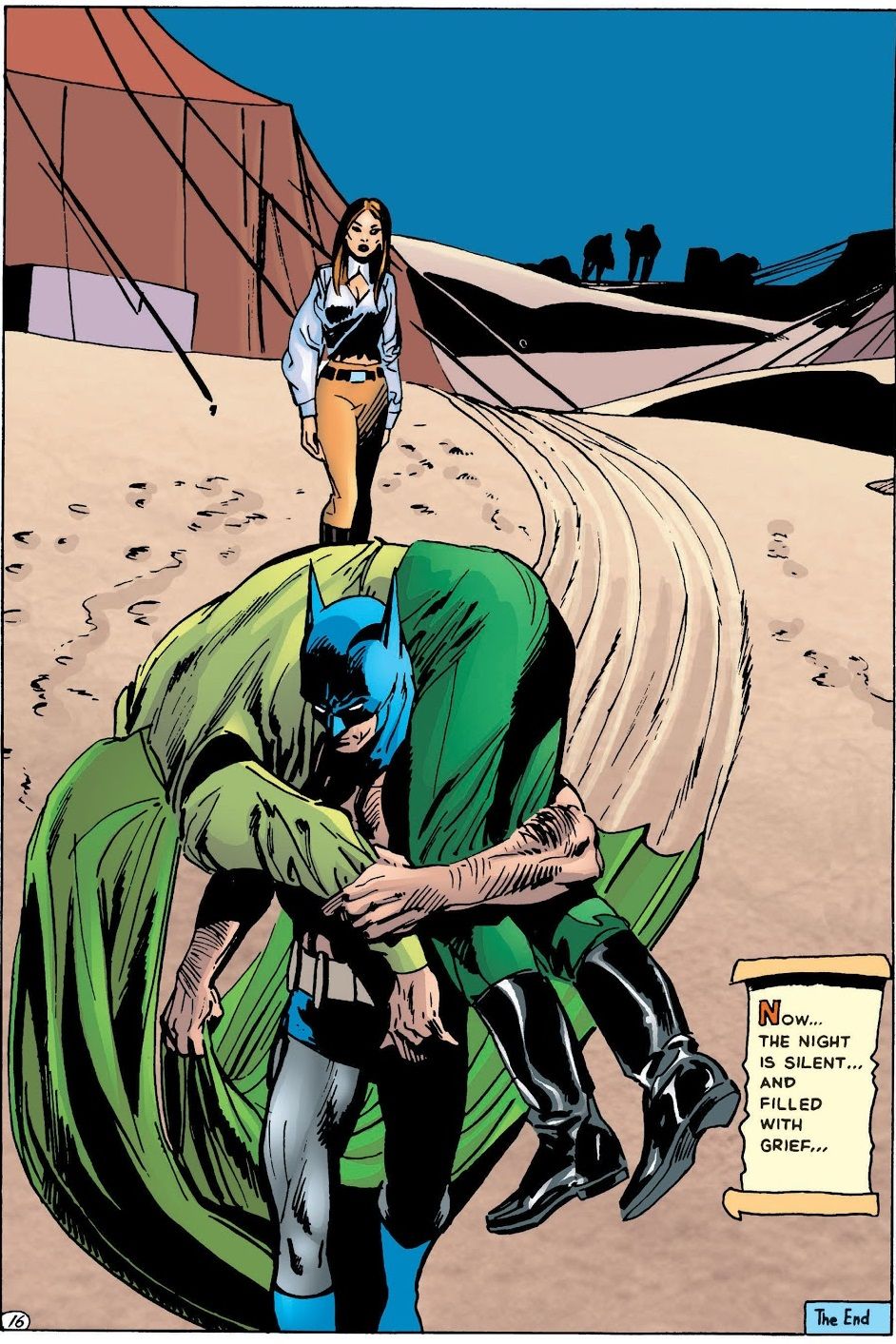Today, we head back 50 years to see how Batman became what Grant Morrison once referred to as the "hairy-chested globetrotting love god of the 70s" via a sword fight to the death (and beyond) with Ra's al Ghul.
This is "Look Back," where every four weeks of a month, I will spotlight a single issue of a comic book that came out in the past and talk about that issue (often in terms of a larger scale, like the series overall, etc.). Each spotlight will be a look at a comic book from a different year that came out the same month X amount of years ago. The first spotlight of the month looks at a book that came out this month ten years ago. The second spotlight looks at a book that came out this month 25 years ago. The third spotlight looks at a book that came out this month 50 years ago. The fourth spotlight looks at a book that came out this month 75 years ago. The occasional fifth week (we look at weeks broadly, so if a month has either five Sundays or five Saturdays, it counts as having a fifth week) looks at books from 20/30/40/60/70/80 years ago.
Today, we go back to July 1972 for Batman #244's "The Demon Lives Again!" by the late and great Denny O'Neil, Neal Adams and Dick Giordano (we sadly lost both Denny and Neal just in the last few years), where O'Neil and Adams helped define a whole era of Batman comics in one issue (I seriously was going to say "Changed Batman forever" in the headline, to make this three Look Backs in a row with that headline, but I thought better of it).
NOTE: The art from the comic has always been a tricky one to crop into a header, so for the header of this piece, I used a Neal Adams print depicting the fight that he drew years later. I don't believe it's for sale on his site anymore, or else I'd send you there. Feel free to check out other bits on his site, though.
HOW WAS BATMAN LIKE JAMES BOND?
I've covered this issue so many times that I'm really just repeating myself here, but one of the important things to remember about Denny O'Neil's Batman is that, for the most part, his take on Batman wasn't that the Dark Knight was this perfect crimefighter. He was obviously a talented superhero, but he was about as close as you could get to a "normal" superhero. Never is this more obvious than in the storyline that introduced Ra's al Ghul to the comic book world.
Batman fakes Bruce Wayne's death and takes on the identity of Matches Malone because he needs to concentrate solely on tracking down and defeating Ra's Al Ghul. He even puts together a team of experts in their fields to help him (like a martial arts expert named Ling). This is all roughly based on the James Bond films of the era, where Bond would team up with a disparate group of folks pretty much every movie.
In Batman #243 (by O'Neil, Adams and Giordano), Batman accosts Ubu (Ra's al Ghul's bodyguard) when he runs into Talia, but then Batman is taken down by a champion skier. And when she insists on joining his team, he's basically like, "Eh, okay." However, the whole thing appears to be a moot point when they get to Ra's al Ghul's headquarters, and he is already dead! Of course, he is then resurrected, and he is MAD.
He kicks everyone's ass at the start of the next issue (the issue at hand today), and as he escapes, Batman tries to go after them on skiis, but the skier insists on coming, too, and things don't go well for her...
Batman has to let Ra's and Talia escape to tend to his new friend (by the way, these are the modern re-colorings of these stories, directed by Adams' himself. I know they lose a bit of the original flair of the comic from 1972, but I figure if this is how Adams wanted them to look, I'll go with that).
HOW DID BATMAN BECOME A "HAIRY-CHESTED GLOBETROTTING LOVE GOD"?
Batman is a really good detective, though, so he tracks Ra's down and this impresses Ra's a lot.
They decide to have a sword fight in the desert with their shirts off, because of course they did...
As I was noting before, Batman is super FALLIBLE in this comic, as he is bitten by a scorpion and nominally appears to die. But Talia comes to him with an antidote for the scorpion bite, and we almost see Batman transcend his normal "typical guy" self and become something more, something that shocks Ra's, as well, with his whole "still being alive" deal, as Ra's delivers the quote that we're spotlighting this time around...
I love that a dude who JUST CAME BACK FROM THE DEAD HIMSELF is so shocked by Batman not being dead. It's still an EXCELLENT scene. My goodness, Adams drew the heck out of it.
Ra's folds like a cheap suit and Batman kisses Talia...
This, then, is what Grant Morrison later called the definition of the "hairy-chested globetrotting love god" era of Batman, and Morrison really nailed it (which is unsurprising, of course, as they're a brilliant writer).
Then Batman heads off with Ra's across his back, to, you know, travel across the world to have the Gotham City PD arrest him, I guess...
I imagine some interesting Weekend at Bernie's style stuff where Batman changes back into Matches and has Ra's get on to his private plane unconscious.
If you folks have any suggestions for August (or any other later months) 2012, 1997, 1972 and 1947 comic books for me to spotlight, drop me a line at brianc@cbr.com! Here is the guide, though, for the cover dates of books so that you can make suggestions for books that actually came out in the correct month. Generally speaking, the traditional amount of time between the cover date and the release date of a comic book throughout most of comic history has been two months (it was three months at times, but not during the times we're discussing here). So the comic books will have a cover date that is two months ahead of the actual release date (so October for a book that came out in August). Obviously, it is easier to tell when a book from 10 years ago was released, since there was internet coverage of books back then.

